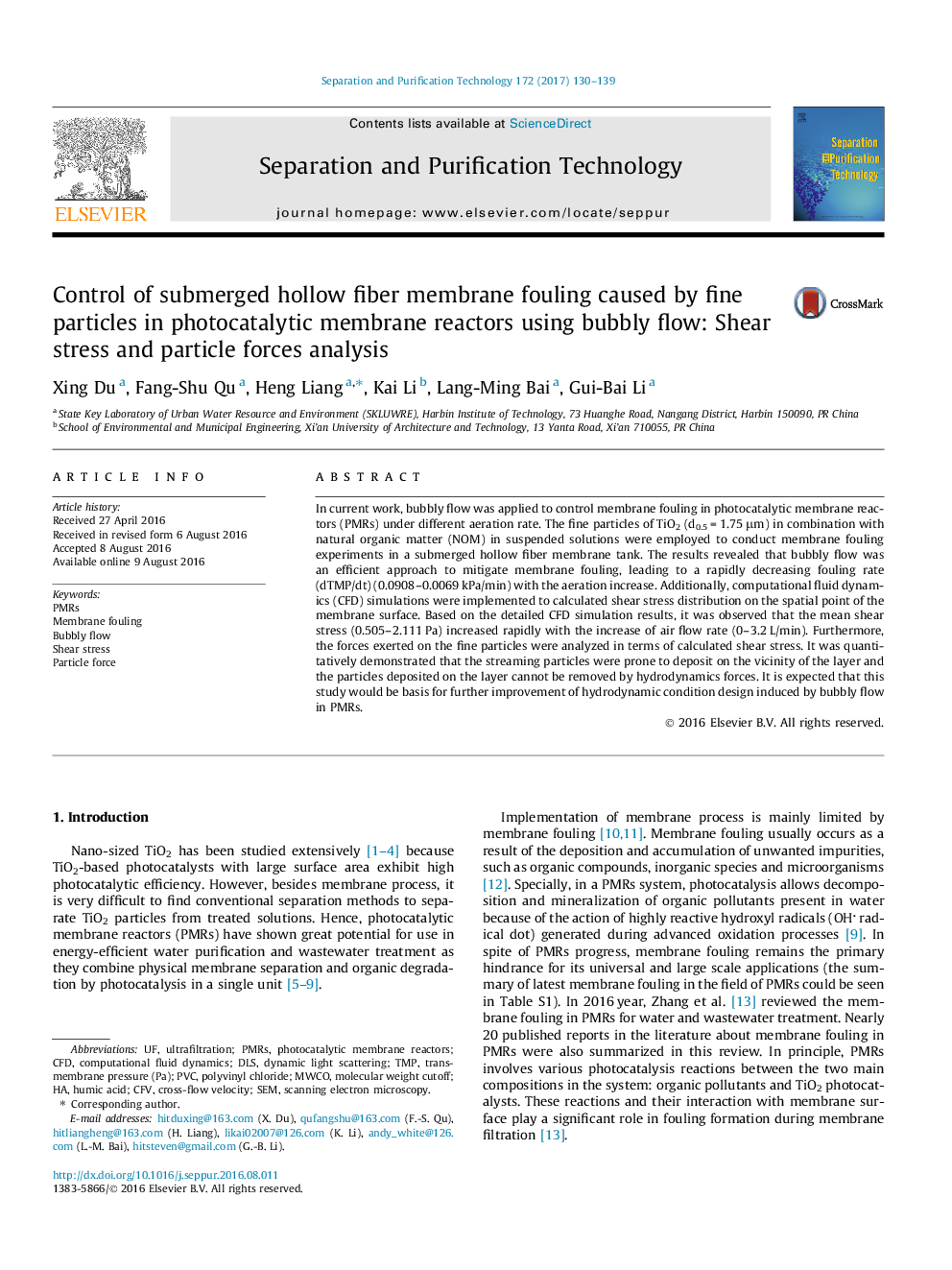| Article ID | Journal | Published Year | Pages | File Type |
|---|---|---|---|---|
| 639750 | Separation and Purification Technology | 2017 | 10 Pages |
•We used bubbly flow to alleviate membrane fouling of PMRs.•Aeration rate plays a significant role on membrane fouling control.•CFD results present a comprehensive understanding of shear stress on HFM surface.•Forces on streaming and deposited particles were quantitatively estimated.
In current work, bubbly flow was applied to control membrane fouling in photocatalytic membrane reactors (PMRs) under different aeration rate. The fine particles of TiO2 (d0.5 = 1.75 μm) in combination with natural organic matter (NOM) in suspended solutions were employed to conduct membrane fouling experiments in a submerged hollow fiber membrane tank. The results revealed that bubbly flow was an efficient approach to mitigate membrane fouling, leading to a rapidly decreasing fouling rate (dTMP/dt) (0.0908–0.0069 kPa/min) with the aeration increase. Additionally, computational fluid dynamics (CFD) simulations were implemented to calculated shear stress distribution on the spatial point of the membrane surface. Based on the detailed CFD simulation results, it was observed that the mean shear stress (0.505–2.111 Pa) increased rapidly with the increase of air flow rate (0–3.2 L/min). Furthermore, the forces exerted on the fine particles were analyzed in terms of calculated shear stress. It was quantitatively demonstrated that the streaming particles were prone to deposit on the vicinity of the layer and the particles deposited on the layer cannot be removed by hydrodynamics forces. It is expected that this study would be basis for further improvement of hydrodynamic condition design induced by bubbly flow in PMRs.
Graphical abstractFigure optionsDownload full-size imageDownload as PowerPoint slide
